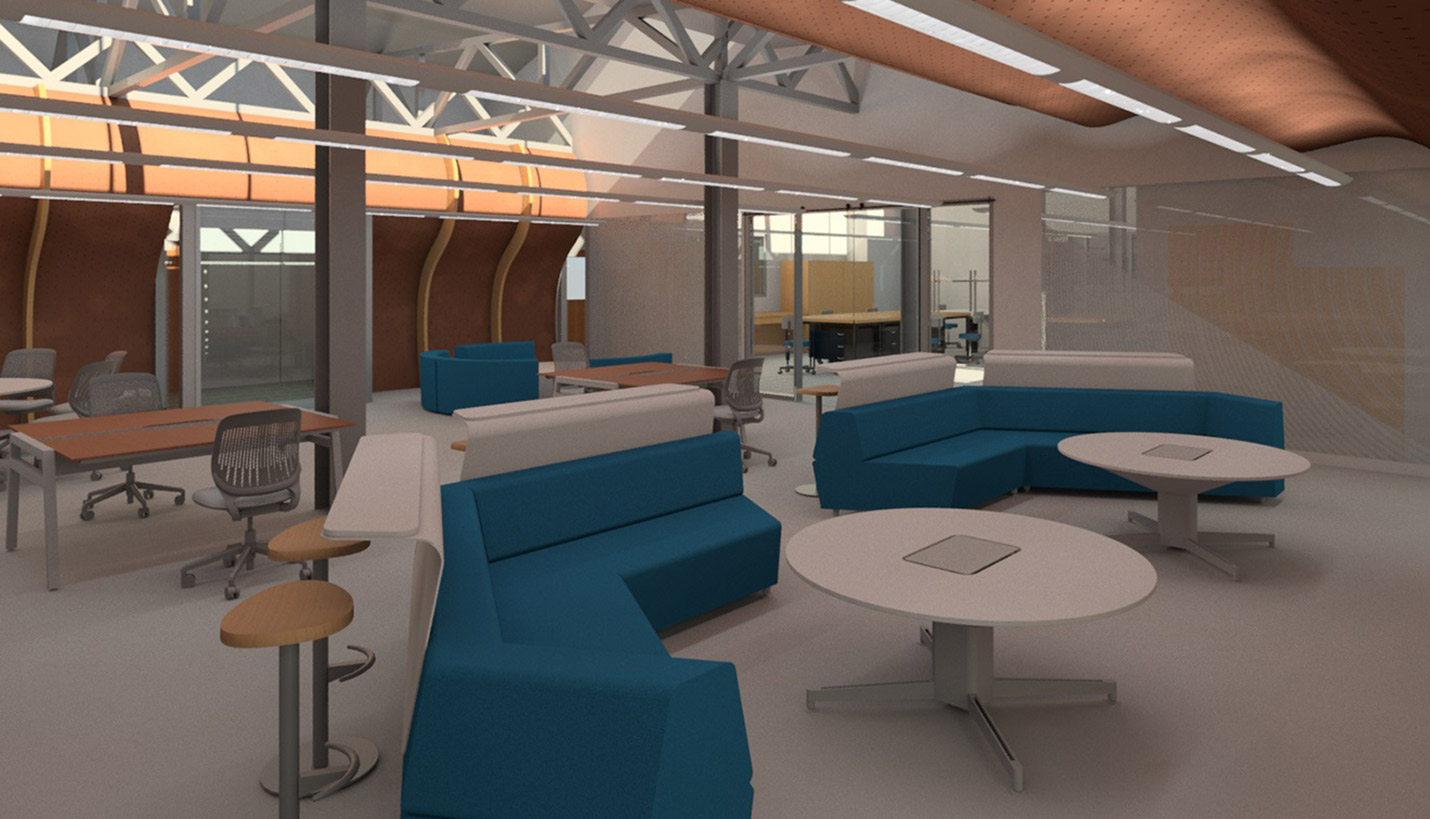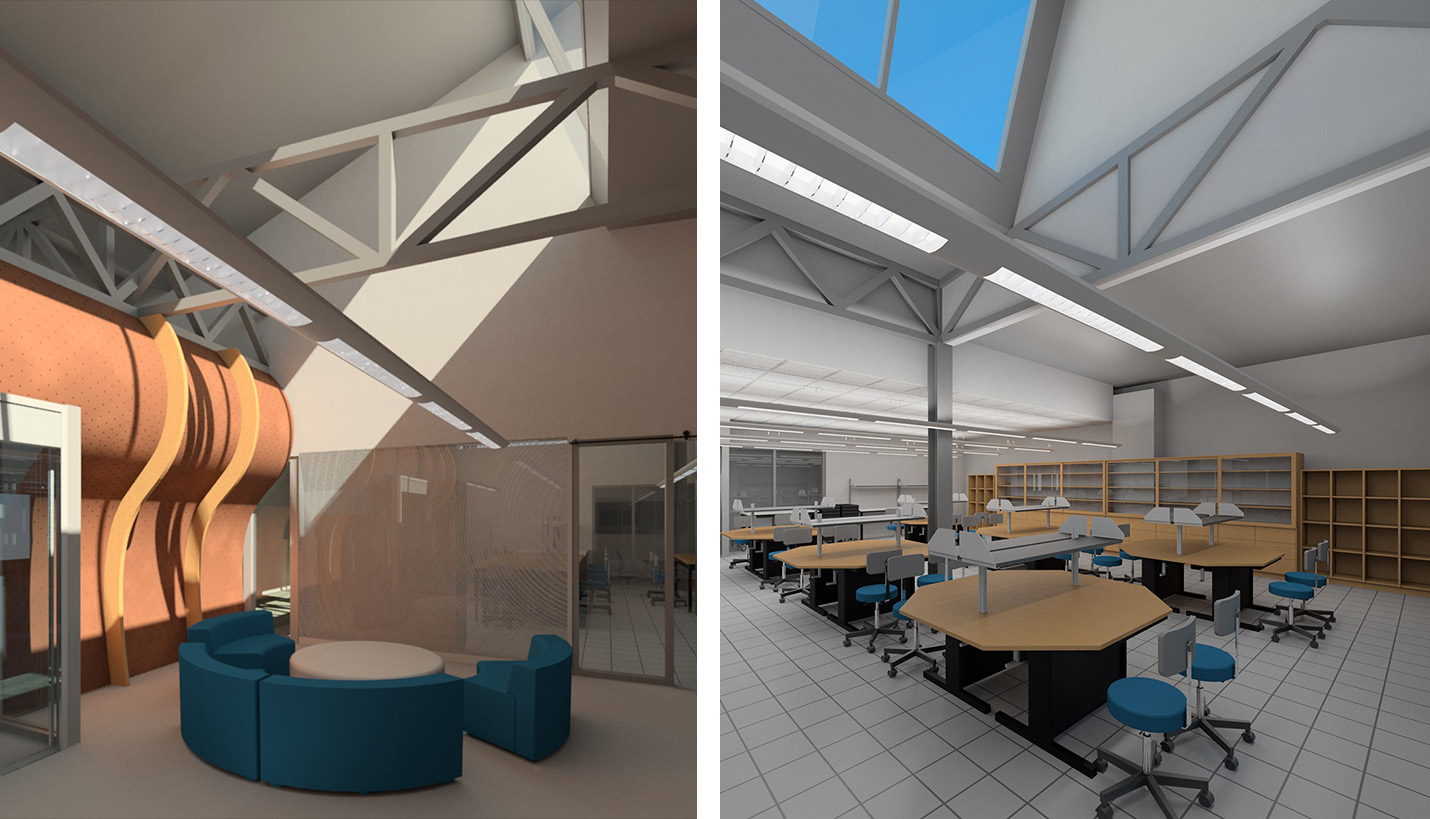Virtual Reality Tour of a University Design
Using the Page BIM (building information model) for their background, the University of Delaware College of Engineering developed a virtual reality (VR) platform to showcase the firm’s design for their new innovation lab, or ‘isuite’. The VR model, best viewed on a smartphone or tablet, is being used to highlight the University’s commitment to innovation, research and development to prospective students.
Part collaboration space, part maker space and part cyber range where the university will compete globally in ‘white hat/ black hat’ (hacking) exercises, the three Page-designed spaces certainly appear convincing on screen. Initially provided with three non-contiguous rooms, Page removed a ceiling tile during the programming phase to discover a large roof monitor which had been covered over and long forgotten. After recognizing this element could truly enhance the proposed spaces, the Department of Electrical & Computer Engineering was quick to provide the designers with sufficient latitude to re-shuffle portions the building’s first floor, including the relocation of a sizeable computational center to facilitate the co-location these spaces for maximum effectiveness.
Visually, the three interconnected spaces certainly ‘look the part’ of a completed project. Two of the three elements feature tall, daylit workspaces with the design lab and cyber range serving as anchors, linked by a central collaboration space with sweeping 24-foot high ceilings. The design concept serves to reinforce the functional purpose of the space in metaphoric fashion. Architectural metal fabric used for ceiling and wall elements speak to the sinusoidal nature of electrical wave forms and their variations are suggestive of signal modulation used for cryptography. Additional dialogue is provided via an expressed conflict between the copper ‘Faraday cages’, walls typically used to trap stray signals, which contrast the soft curves and forms employed to say, ‘come on in’. During cyber range operations, which are designed to be the most advanced in the country, multiple computer monitors suspended from cable lift devices will descend from the ceiling, signaling that the range is on-line and ready for action.
The forms employed are also unique, according to wire mesh material manufacturers. Rather than hanging simply as drapes, the tensile properties of the wire mesh are developed to form true curves rather than ordinary catenaries. Early in the design process, Page utilized a 3-D printer to communicate concepts to the client. Later, the design team developed half-scale mockups of the mesh assembly to demonstrate scalability, proof of concept and to show these elements could be fabricated quickly and economically. Construction is anticipated to commence this fall and will be completed in time for the University’s spring ‘Trustees’ event in May of 2017.
The client has been very pleased, telling Page, "We think your design is lovely and would love to build out more tours". To view the University of Delaware's VR tour for yourself, click here (not supported by Internet Explorer).
Contributed By
Lou Krupnick, Associate Principal
10/03/2016











